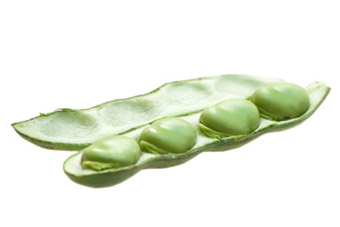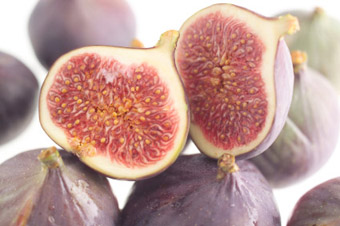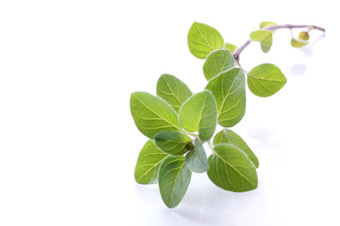|
|
|
|
Top 10 superfoods for spring Melissa Breyer – Mon Mar 28,
7:34 pm ET
Melissa Breyer – Mon Mar 28,
7:34 pm ETI’m the first to admit that the term “superfood” gets thrown around a lot in media and marketing, but that doesn’t mean we should turn our backs on the bursting-with-nourishment, lovely, potent, and delicious foods that fall under the moniker. Especially when these foods are known to lower cholesterol, reduce the risk of heart disease and cancer, and, while we’re at it, put you in a better mood. Although some people have run rampant with the term and have made a mint by promoting the “miraculous! fountain-of-youth! death-defying!” benefits of superfoods, I hope that there won’t be a backlash against good, old-fashioned, super nutrient-exuberant food. As I’ve said before, I’m a crusader for most edibles in their pure forms — and the majority of them are superfoods in my book. There are few whole foods from the plant world that don’t have some health-boosting element to brag about — so how to decide what to eat? That’s why I like to think about (and eat) superfoods by season. Sure pumpkin is an A-plus superfood, but I like to save that for fall when it’s fresh and local, and look towards new fruit and tender green things this time of year. It’s a way to be connected to the planet’s cycle and decrease food miles, while giving your body a diversity of nutrients throughout the year to maximize its potential. And, to me at least, spring produce just tastes its amazing best in, yes, the spring! Funny how that works. 
1. ArtichokesStudies have shown that artichokes contain a very high amount of antioxidants in the form of phytonutrients. A study undertaken by the USDA ranked artichokes as the number one fresh vegetable in antioxidant count. Among the most powerful phytonutrients are cynarin and silymarin, which have strong positive effects on the liver — any coincidence that artichokes have been reputed to help in the cure of liver diseases, liver cancer, and to cure hangovers? One large artichoke contains only 25 calories, no fat, 170 milligrams of potassium, and is a good source of vitamin C, folate, magnesium, and has 6 grams of dietary fiber — 25 percent of the daily recommended amount. How to prepare an artichoke? Read this. 
2. AsparagusAccording to the National Cancer Institute, asparagus is the food highest in glutathione, an important anti-carcinogen. It is also rich in two cancer-blocking vitamins (A and C) as well as the mineral selenium. These three nutrients have been singled out in several studies as fearsome cancer fighters. A 5-ounce serving (only 20 calories) provides 60 percent of the recommended daily allowance for folacin which is necessary for blood cell formation, growth, and prevention of liver disease. Asparagus is also an excellent source of potassium, fiber, thiamin, vitamin B6, and is one of the richest sources of rutin, a compound which strengthens capillary walls. Recipes: 
3. AvocadoThey're rich, they're buttery, they're delicious, and they have about 30 grams of fat per fruit. Ouch. But that's no reason not to love an avocado. Nutritionists have back-pedaled on their gentle warnings about avocados after finding that most of the fat in an avocado is monounsaturated — the happy fat that actually lowers cholesterol levels. Yay! Let's have an avocado party! A study published in the Archives of Medical Research found that the 45 volunteers who ate avocados every day for a week experienced an average 17 percent drop in total blood cholesterol. As well, their levels of LDL ("bad fat") and triglycerides, both associated with heart disease, went down. Their HDL ("good fat") levels, which tend to lower the risk of heart disease, increased. Avocados are rich in beta-sitosterol, a natural substance shown to significantly lower blood cholesterol levels. In a review article published in the December 1999 issue of the American Journal of Medicine, researchers pointed out that beta-sitosterol was shown to reduce cholesterol in 16 human studies. Recipes: 
4. BlueberriesJam-packed with antioxidants and phytoflavinoids, blueberries are also high in potassium and vitamin C. Recent research has found that additional components of blueberries may play an important role in preventing and fighting cancer. The results of one study suggest a wide array of potential cancer fighting benefits related to wild blueberry consumption. Blueberries also have anthocyanin pigments, which may have the ability to halt cancer in the critical stages of promotion and proliferation. A 2005 study published in the Journal of Biochemistry and Cell Biology indicated that, in isolated cells, the tannins found in blueberries are very active at lowering a protein that plays a role in the metastasis of cancer. In addition to helping prevent and fight cancer, the compounds in blueberries are believed to help against Alzheimer's disease, heart disease, eye disease, and urinary tract infections. See? Super. Recipes: 
5. Fava Beans (aka Broad Beans)Mmmm. Spring in a pod — I adore fava beans, even if they are a little work. OK, a lot of work, but so worth it! Not only are the big, fat, creamy beans scrumptious, but fava beans are particularly high in fiber (85 percent of the RDV), and also high in iron (30 percent of a day's requirement). They contain no cholesterol and are low in fat. Fava beans are also noted to contain L-dopa, which is used as a drug for the treatment of Parkinson's disease. Additionally, as with most whole grains, consumption of fava beans can help reduce risks associated with heart disease. Recipes: 
6. Fresh FigsFresh figs put the "va va voom" in fruit — the tender but toothsome skin gives way to a soft and sticky center, dotted with delicately popping seeds, the perfumed and honeyed flesh — you get the picture. In my humble opinion, figs are quite an experience. And beyond their drop-dead flavor is their profusion of life-boosting qualities. Figs have the highest overall mineral content of all common fruits. With their standout source of potassium, figs may help to control blood pressure. Figs are high in calcium. And as fate would have it, their potassium may reduce the amount of calcium lost as a result of high-salt diets. Figs are also a good source of iron, vitamin B6, and the trace mineral manganese. The fruit also has tremendous amounts of fiber, more than any other dried or fresh fruit. Insoluble fiber protects against colon and breast cancer — soluble fiber helps lower blood cholesterol, and figs provide both. (Which also makes them a mild laxative, just so you know.) They also are a good source of flavonoids and polyphenols. Recipes:

7. LeeksLeeks look like cartoonishly big green onions, with a wonderfully sweet and subtle onion flavor. When braised or slowly sauteed, they melt into a sweet and creamy concoction that is hard not to love. And they are workhorses in the health department as well. Like garlic, onions, scallions, chives and shallots — all from the Allium family — leeks can help the liver eliminate toxins and carcinogens. Leeks contain sulfur compounds that may protect against heart disease and some cancers, they can help the liver eliminate toxins and carcinogens. Regular consumption of Allium vegetables (as little as two or more times a week — although I could certainly eat them every meal) is associated with a reduced risk of prostate and colon cancer. Recipes: 
8. Oregeno and Other Fresh HerbsI love fresh oregano, especially if salty Mediterranean flavors — capers, olives, roasted peppers — are involved. Yum. And superfood-y too! When researchers at the University of Oslo, Norway, analyzed 1,113 foods to identify those foods richest in total antioxidants, of the 50 foods highest in antioxidants, 13 were herbs and spices. One study found that oregano had 42 times more antioxidants than apples. You might find that parsley is an excellent source of beta carotene, the carotenoids lutein and zeaxanthin (essential for preventing macular degeneration), vitamin A, vitamin C, and vitamin K. Or try cilantro. In research studies, cilantro's remarkable components have shown the potential to help promote detoxification, reduce high blood sugar and lower levels of cholesterol. Recipes: 
9. SpinachSpinach, good old spinach. Spinach is an excellent source of folate — the B vitamin that helps to prevent birth defects, heart disease, dementia, and colon cancer (the third most common cause of cancer in women). People who eat at least one serving of greens, including spinach, each week are 20 percent less likely to develop colon cancer, according to Italian research. Another compound in spinach, lutein, fights against macular degeneration, which causes age-related vision loss — in fact, including at least two servings of spinach a week in your diet halves the odds of macular degeneration (a leading cause of blindness), according to the the National Eye Institute. Eating cooked spinach more than twice a week cuts the need for cataract eye surgery in men by half, according to new Harvard University research. And in a large-scale Harvard study, spinach singled out as most protective against stroke! Finally, because of it's high in vitamin K, spinach also helps build stronger bones — lowering the risk of hip fracture from osteoporosis as much as 30 percent, suggests a joint Harvard-Tufts study. Popeye was on to something. Recipes: 
10 .StrawberriesA serving of eight medium strawberries provides 140 percent of the daily recommended allowance of vitamin C, 12 percent of our RDA for fiber, 6 percent of our RDA for folate, 210 mg of potassium, and is also high in vitamins K, B2, B5 and B6, copper, magnesium, and omega-fatty acids. In addition, strawberries contain anthocyanin, which has been used for studies in preventing initiation of cancers. Strawberries contain a unique phenolic group, ellagotannins, which are effective in preventing initiation of esophageal cancer. With more antioxidant punch than most other fruits, berries in general strengthen tissue defenses against oxidation and inflammation, which are underlying factors in most age-related diseases. For example, substances in blueberries help with short-term memory loss associated with aging. All berries help lower risk for breast, oral, and colon cancers in women. With a wealth of phytochemicals like ellagic acid, adding strawberries to the diet lowers tumor risk by up to 58 percent. Recipes: |
|
|
Send E-mail to
TSN@The-Saudi.Net with questions or
comments about The Saudi Network. We are Looking for Business Sponsorship or Marketing Partnership |